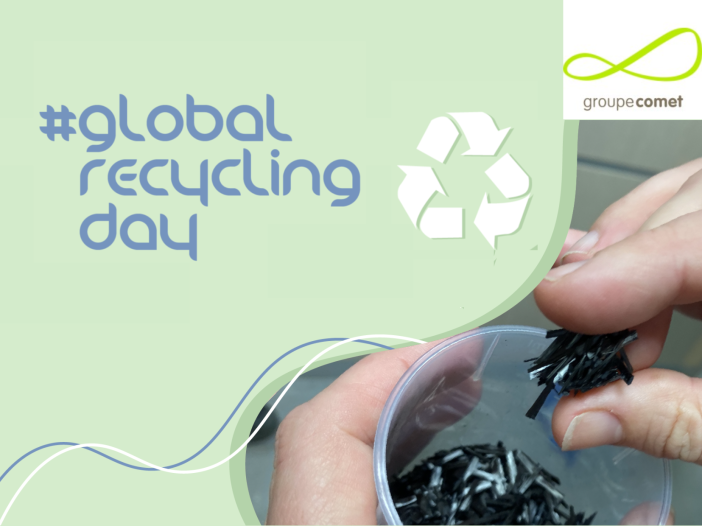
On this Global Recycling Day, it is important to recognize the crucial role of carbon fiber recycling in mitigating the environmental footprint of the aerospace industry. The percentage of carbon fiber used in airplanes can vary depending on the specific aircraft and its components. Generally, carbon fiber composites make up a significant portion of an aircraft’s weight, particularly in newer, more advanced models.
For example, the Boeing 787 Dreamliner is composed of approximately 50% carbon fiber reinforced polymer (CFRP) by weight, which is used in the wings, fuselage, and other key structural components. Similarly, the Airbus A350 XWB is composed of approximately 53% CFRP by weight, making it one of the most carbon fiber-intensive commercial aircraft in the world.
Overall, the use of carbon fiber in aerospace is increasing due to its strength and lightweight that offers many benefits in terms of fuel efficiency and reduced emissions, but it also creates a significant waste stream. Disposing of carbon fiber products at the end of their life cycle can also be challenging. Carbon fiber is a non-biodegradable material that can take hundreds of years to break down in landfills. Thus, recycling carbon fiber is an essential step towards reducing the environmental impact of the aerospace industry. By reusing and repurposing carbon fiber, we can reduce the amount of waste going to landfills and reduce the need for virgin materials.
The MORPHO project: testing new recycling technologies
Pyrolysis technology is a promising method for recycling carbon fiber waste. The COMET Group, a company that specializes in waste management and recycling solutions, is the partner in charge of this process within the MORPHO project. They have adapted the pyrolysis technology developed initially for organic shredder residues to Polymer Composite Materials. This is a great example of innovative thinking and repurposing technology to address new challenges in a different industry.
“We have been positively surprised by the quality of the recovered fibers, we do expect that the preliminary results will be confirmed in the course of the MORPHO project” Quentin Van Haute, R&D Engineer, COMET.
Pyrolysis is a process that involves heating materials at approximately 500°C in the absence of oxygen, which breaks down the material into its constituent parts. In the case of carbon fiber, pyrolysis can break down the resin matrix that holds the carbon fibers together, allowing the fibers to be recovered and reused. The recovered carbon fiber has similar mechanical properties to virgin carbon fiber, making it suitable for use in high-performance applications.
In conclusion, the development of pyrolysis technology for the recycling of polymer composite materials is a promising development that can help to reduce the environmental impact of these materials. The adaptation of existing technologies for new applications is an exciting trend that can lead to new solutions for sustainability and a more circular economy.